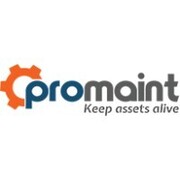
Best Calibration Management Software 2025
What is Calibration Management Software? Calibration Management Software is a tool used by various departments within an organization to efficiently manage and track calibration processes. It is primarily utilized by quality control, manufacturing, and maintenance departments, as well as laboratories and other regulatory compliance-focused areas. The main goal of using Calibration Management Software is to ensure that all measurement and test equipment within an organization are accurate, ...
We’ve collected videos, features, and capabilities below. Take me there.
All Products
Learn More about Calibration Management Software
What is Calibration Management Software?
Calibration Management Software is a tool used by various departments within an organization to efficiently manage and track calibration processes. It is primarily utilized by quality control, manufacturing, and maintenance departments, as well as laboratories and other regulatory compliance-focused areas.
The main goal of using Calibration Management Software is to ensure that all measurement and test equipment within an organization are accurate, reliable, and in compliance with industry regulations. By centralizing all calibration-related activities, this software helps organizations minimize machinery downtime, reduce the risk of errors, and provide complete certification of equipment.
While closely related to Computerized Maintenance Management Systems (CMMS) and Enterprise Asset Management (EAM) software, Calibration Management Software specifically focuses on the calibration processes and maintaining the accuracy and reliability of measuring equipment. Enterprise Asset Management (EAM) organizes the lifecycle of all physical assets, not solely equipment and machinery. Computerized Maintenance Management Systems expand on maintenance workflows and include project management features, rather than specializing in equipment calibration.
Features of Calibration Management Software
When evaluating Calibration Management Software, potential buyers should expect to find the following key features:
- Equipment Management: Allows users to create a database of all calibration equipment, including information such as make, model, serial number, location, calibration due dates, and historical calibration records.
- Calibration Scheduling: Enables users to schedule calibration tasks based on due dates, triggered alerts, or usage-based intervals. This feature ensures that all equipment is calibrated in a timely manner, minimizing downtime and maintaining compliance.
- Work Order Management: Provides the ability to create, assign, and track work orders for calibration tasks. This feature improves visibility and accountability throughout the calibration process.
- Document Control: Allows users to manage calibration-related documents, such as calibration procedures, certificates, and compliance documentation. It ensures that the latest versions of documents are easily accessible and that any changes are properly documented.
- Data and Analytics: Provides reporting and analysis tools to monitor calibration metrics, track trends, and identify areas that may need improvement. This feature helps organizations make data-driven decisions and demonstrates compliance during audits.
Calibration Management Software Comparisons
When considering Calibration Management Software, potential buyers should keep the following factors in mind:
- Point Solution vs EAM Suite: Does your current Enterprise Asset Management Software include relevant calibration features or is a specialized tool more suitable for your operations? A specialized calibration product might be beneficial for businesses with multiple facilities and teams to coordinate between.
- Integration: Consider whether the software can integrate with other systems within the organization, such as CMMS, EAM, or quality management systems. This integration ensures seamless data flow and reduces duplicate work.
- Compliance Features: Ensure that the software meets relevant industry standards and regulations for your industry, such as ISO 9001, ISO/IEC 17025, or FDA requirements. It should also have features to assist with audits and compliance reporting.
- Support and Training: Consider the availability of customer support, documentation, and training resources provided by the software vendor. A robust support system ensures smooth implementation and ongoing use. Also, consider if the software is suited for training internal employees in conducting the calibration themselves or if it will be used simply for scheduling third party calibration services.
Calibration Management Software Pricing Information
Pricing for Calibration Management Software can vary widely depending on the vendor and the specific needs of the organization. The cost of the software is typically based on factors like the number of users, the number of calibration equipment being managed, and the level of functionality required. While specific pricing information may not be readily available on vendor websites, most vendors offer custom quotes based on the organization's requirements.
Generally, pricing models may range from monthly or annual subscriptions to perpetual licenses. Some vendors offer free trials or demo versions of their software, allowing potential buyers to evaluate the solution before making a purchase decision. More expensive plans often include additional features or advanced analytics capabilities.
























